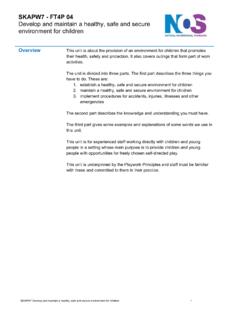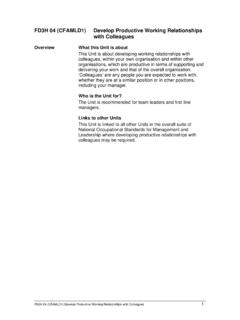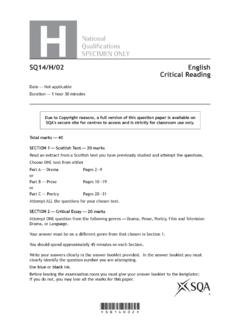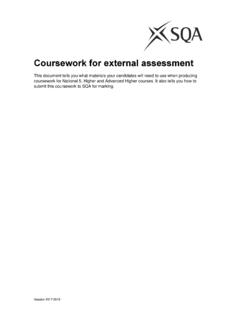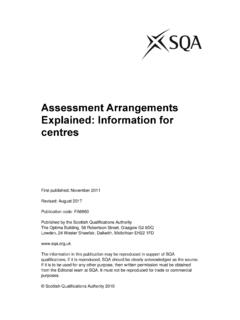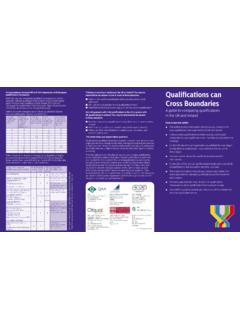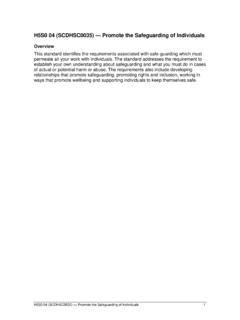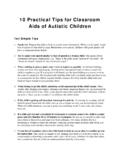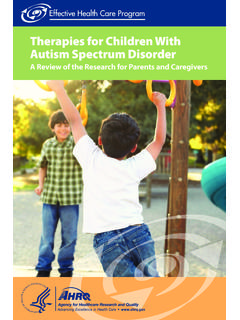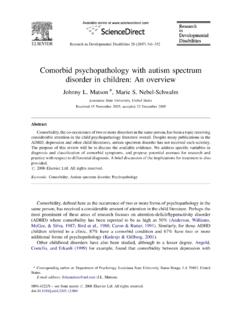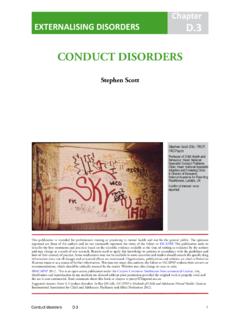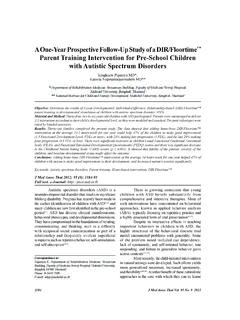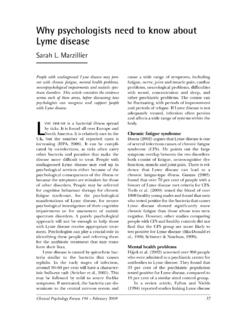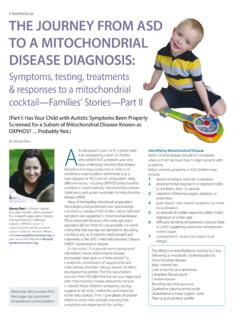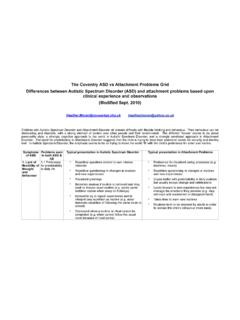Transcription of H5LC 04 (SCDCCLD 0301) Promote Effective Communication
1 H5LC 04 ( scdccld 0301) Promote Effective Communication 1 H5LC 04 ( scdccld 0301) Promote Effective Communication Overview This standard identifies the requirements when promoting Effective Communication within a work setting where children are cared for or supported. This includes establishing understanding of the child s Communication preferences and needs, supporting children to communicate, communicating effectively on difficult, complex and sensitive issues and communicating with others through records and reports. This Standard is tailored from SCDHSC0031 (Health and Social Care suite of NOS). H5LC 04 ( scdccld 0301) Promote Effective Communication 2 Additional Information Scope/range related to Performance Criteria The details in this field are explanatory statements of scope and/or examples of possible contexts in which the NOS may apply; they are not to be regarded as range statements required for achievement of the NOS.
2 The use of the terms child or children in this standard may refer to your work on an individual or group basis. NOTE: Where a child or young person finds it difficult or impossible to express their own preferences and make decisions about their life, achievement of this standard may require the involvement of advocates to represent the views and best interests of the child or young person. Where there are language differences within the work setting, achievement of this standard may require the involvement of interpreters or translation services. Active participation is a way of working that regards children and young people as active partners in their own care or support rather than passive recipients. Active participation recognises each child and young person s right to participate in the activities and relationships of everyday life as independently as possible.
3 Barriers to Communication may include those relating to the physical environment; to interpersonal relationships and the emotional environment; to working practices; to the availability of resources including human or other aids or assistance; to the limitations of your own or other people s Communication skills or attentiveness; to cultural contexts; to the specific circumstances of the child or young person, including disability, disadvantage, anxiety or distress. Children or young people are the children and/or young people you support and care for in your work. Communication may include using the child s preferred spoken language; the use of signs; the use of symbols or pictures, writing, objects of reference, Communication passports; the use of touch; other non-verbal forms of Communication ; human and technological aids to Communication . Extra support may come from key people, interpreters, translators, signers or specialist assistive technology to aid Communication .
4 Key people are those who are important to a child or young person and who can make a difference to his or her wellbeing. Key people may include family, friends, carers and others with whom the child or young person has a supportive relationship. Listening may encompass other ways of attending to and receiving what children communicate when using methods such as signing, objects of reference, touch, gesture, visual messages or technologies. H5LC 04 ( scdccld 0301) Promote Effective Communication 3 Others are your colleagues and other professionals whose work contributes to the child s well-being and who enable you to carry out your role. H5LC 04 ( scdccld 0301) Promote Effective Communication 4 Scope/range related to Knowledge and Understanding All knowledge statements must be applied in the context of this standard. The details in this field are explanatory statements of scope and/or examples of possible contexts in which the NOS may apply; they are not to be regarded as range statements required for achievement of the NOS.
5 Factors that may affect the health, wellbeing and development may include: family circumstances; folic acid during pregnancy; a healthy diet; positive mental health; physical health; strong social networks; supportive family structure; adverse circumstances or trauma before or during birth; autistic spectrum conditions; discrimination; domestic violence; foetal alcohol syndrome; harm or abuse; injury; learning disability; medical conditions (chronic or acute); physical disability; poverty; profound or complex needs; sensory needs; social deprivation; and substance misuse. Play can be defined as activity involving the child exploring ideas, feelings and relationships whilst applying skills and understand gained from experience. Play provides opportunities for children to learn and discover the world about them. Play may be structured with a particular outcome in mind. Unstructured play refers to play activity freely chosen by the child .
6 The child determines the content and intent of unstructured play. A child may play by themselves or with others. There are many views and theories on the nature and purpose of play which may compliment or challenge the above statement. Values Adherence to codes of practice or conduct where applicable to your role and the principles and values that underpin your work setting, including the rights of children, young people and adults. These include the rights: to be treated as an individual to be treated equally and not be discriminated against to be respected to have privacy to be treated in a dignified way to be protected from danger and harm to be supported and cared for in a way that meets their needs, takes account of their choices and also protects them to communicate using their preferred methods of Communication and language to access information about themselves H5LC 04 ( scdccld 0301) Promote Effective Communication 5 Performance Criteria What you do in your job You must provide evidence to meet all the 38 Performance Criteria for this Unit.
7 The Performance Criteria are grouped under headings to assist you with planning how best to meet these points. Place the number of the piece of work where this Performance Criteria has been met in the evidence box after each criteria. Establish understanding about children s Communication Performance Criteria Evidence Number where this criteria has been met 1 Work in ways, appropriate to the child s ability, that Promote active participation when establishing their preferred method of Communication and language 2 Observe the child to identify their verbal and non-verbal Communication styles. 3 Seek information and advice from key people and others where you have difficulty communicating using the child s preferred Communication method and language. 4 Work with the child and key people to identify any extra support or specific aids required for Communication . 5 Recognise when Communication methods are proving to be ineffective.
8 6 Seek information and advice when issues relating to Communication are beyond your expertise. 7 Establish the child s agreement to pass on information about their Communication and language needs and preferences, taking account of their abilities and preferences. H5LC 04 ( scdccld 0301) Promote Effective Communication 6 Support children to interact through Communication Performance Criteria Evidence Number where this criteria has been met 8 Develop relationships with the child and key people that Promote Communication . 9 Arrange the environment to minimise barriers to Communication . 10 Make sure that any extra support or specific aids to Communication are available. 11 Support the child to communicate using their preferred language and methods of Communication . 12 Encourage the child to use any extra support or specific aids. 13 Pay full attention to the child when listening to them.
9 14 Use routines and activities to communicate with the child . 15 Use styles and methods of Communication that are most likely to meet the child s preferences and needs. 16 Respond to the child in a way that shows you value and respect them. 17 Adapt your Communication when it is proving ineffective. 18 Support the child to engage with key people and others. 19 Support people to communicate using the child s preferred methods of Communication and to understand their responses. 20 Encourage the child to communicate their feelings and emotions in ways that will help you and other people to understand them. H5LC 04 ( scdccld 0301) Promote Effective Communication 7 Support children to interact through Communication (cont) Performance Criteria Evidence Number where this criteria has been met 21 Work together to overcome barriers to Communication . Communicate effectively about difficult, complex and sensitive issues with children and key people 22 Consider the setting and environment when difficult, complex or sensitive issues are to be addressed with children and key people.
10 23 Communicate in ways that are appropriate to the content and purpose of the issue and sensitive to the child s needs, concerns and reactions. 24 Pace the interaction to allow the child and key people sufficient time to understand the content of the Communication and for you to understand their reactions. 25 Support the child to express their responses to the issue. 26 Work with the child and key people to achieve shared understanding about the issue and its impact. 27 Maintain confidentiality within legal and work setting requirements and taking account of the child s safety and welfare. H5LC 04 ( scdccld 0301) Promote Effective Communication 8 Communicate using records and reports Performance Criteria Evidence Number where this criteria has been met 28 Work with the child to maximise their active participation in the updating and maintenance of records and reports, in keeping with their abilities and preferences and within legal and work setting requirements.
